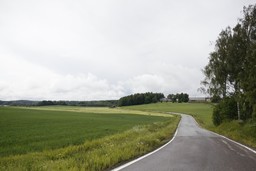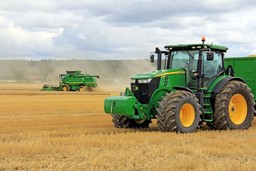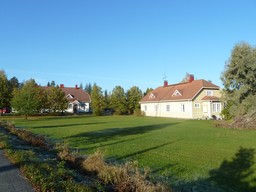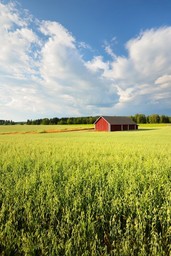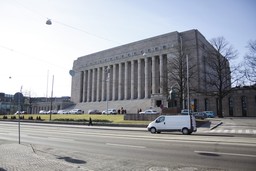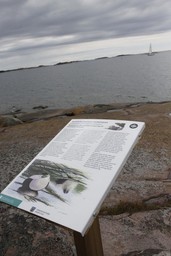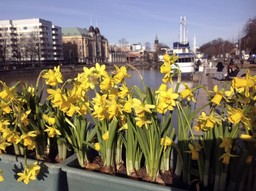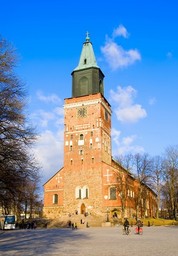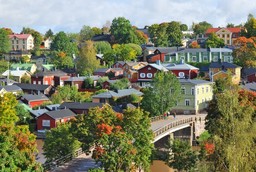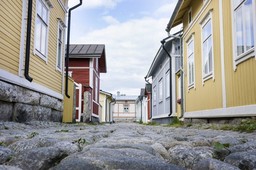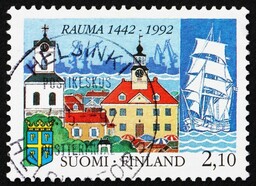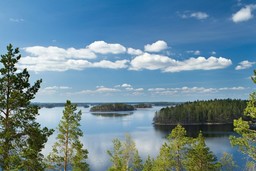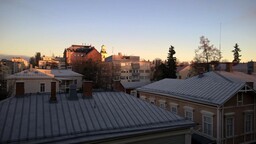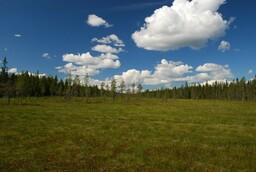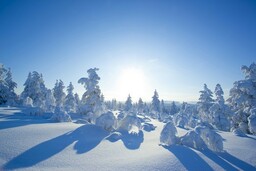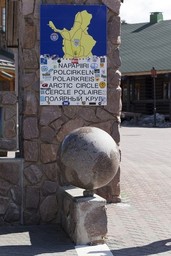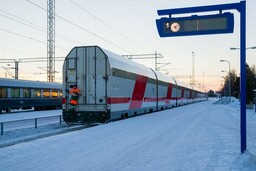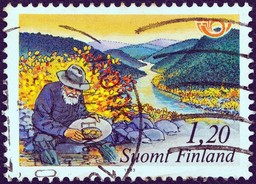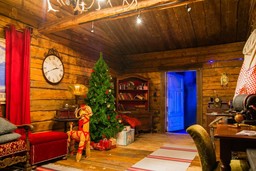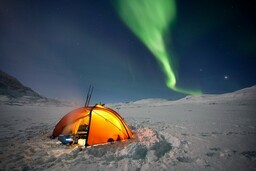11. The scenic regions of Finland
Contents
11.1 Scenic regions
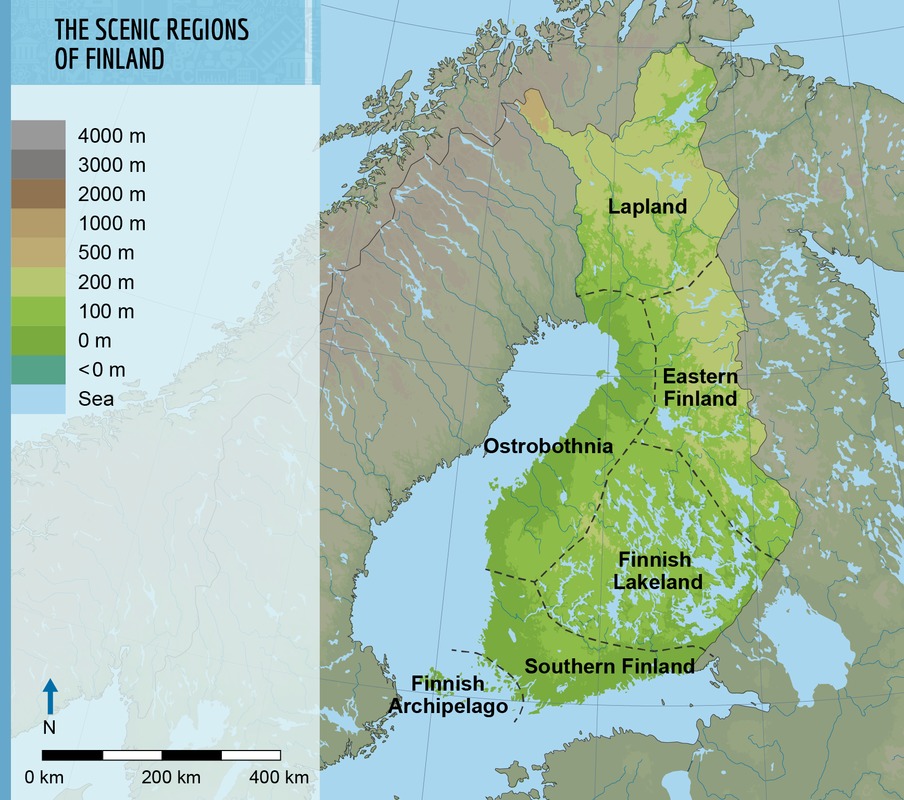 When studying a map of the world, Finland does not really distinguish itself from its surroundings in terms of its elevation and other geographical features.
When studying a map of the world, Finland does not really distinguish itself from its surroundings in terms of its elevation and other geographical features. When looking at a map of the world, the most recognizable features are the shapes of the continents, as well as the planet's vast high mountain ranges, deserts and inland plains.
Finland is a nation that consists mainly of flat lowland or low highland areas. Lowland areas are regions located at an elevation between 0 and 200 meters above sea level, whereas highland areas are located over 200 meters above sea level.
However, when looking at a map of Finland, we can distinguish various kinds of different environments. The nation can be divided into six scenic regions that differ from each other in terms of their topography, rock and soil types, climates and water environments. The six scenic areas are also home to different kinds of plants and animals.
The borders between the Finnish scenic regions are not completely clear. This is because different scenic areas blend into each other gradually.
All Finnish scenic regions consist of natural landscapes and cultural landscapes. Natural landscapes are the most plentiful in Northern and Eastern Finland. When humans have settled in a region and harnessed their natural resources, these natural landscapes have developed into cultural landscapes. For example, humans have cleared forests for agricultural use and built roads and villages. Most Finnish landscapes are a blend of cultural and natural lanscapes.
11.2 Finnish Archipelago
The scenic region of the Finnish Archipelago consists of Åland and the islands between Åland and Turku. Located between the Bothnian Sea, the Sea of Åland and the Archipelago Sea, it is the southernmost of the Finnish scenic regions. It contains thousands of islands, only some of which are inhabited.
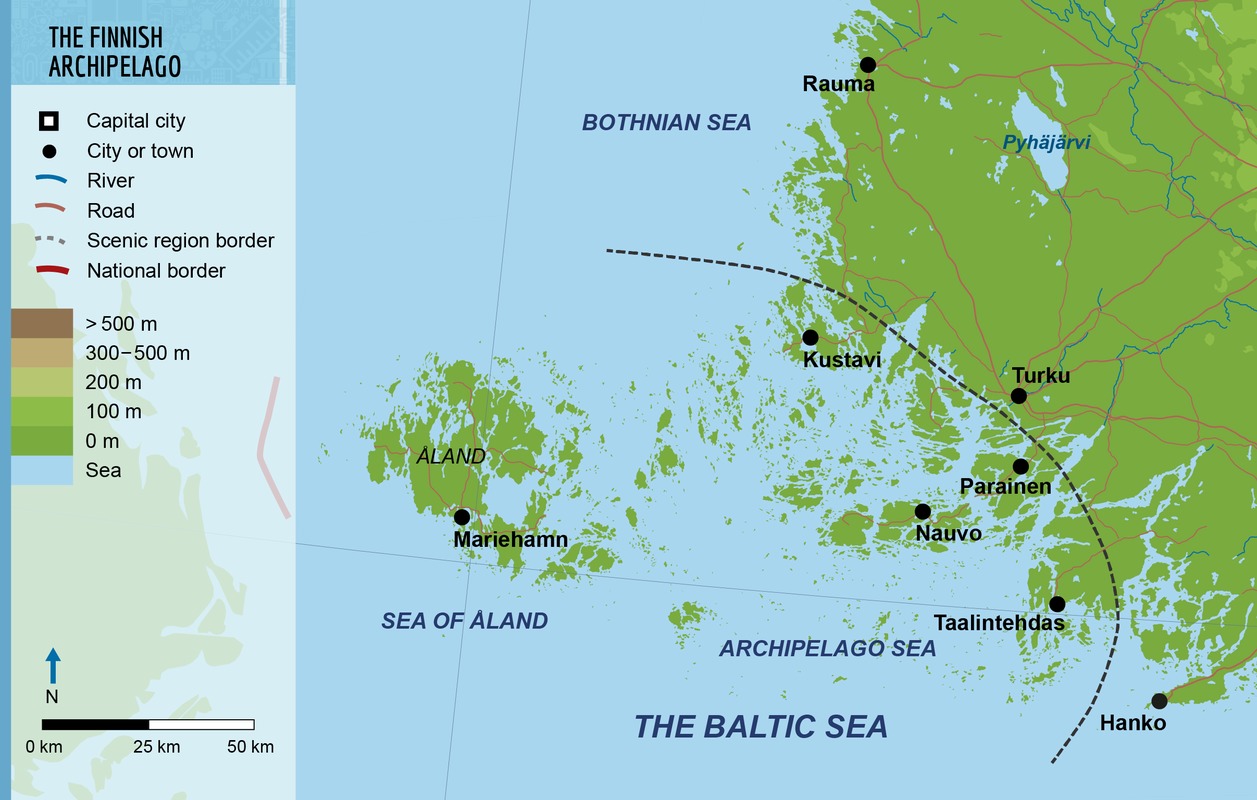
Traditionally, the livelihoods of archipelago folk have depended on fishing. Almost all Finnish fish are grown in the Finnish Archipelago. In addition to fishing, tourism is an important part of the archipelago's economy. Other important livelihoods in the region include the electronics and boat industries, as well as the paper industry.

Outer archipelago in Åland.
The Finnish Archipelago is mostly Swedish-speaking. Good Swedish skills are essential for visitors, especially in Åland. Boats and ferries are important features of the archipelago. They transport inhabitants and tourists alike from island to island.
11.3 Southern Finland
Southern Finland is the most populous area in the country. Helsinki, Espoo, Turku and Vantaa are the largest cities in the area, and among the largest in all of Finland. The largest population center of the nation, the Greater Helsinki region, is concentrated around the nation's capital city.
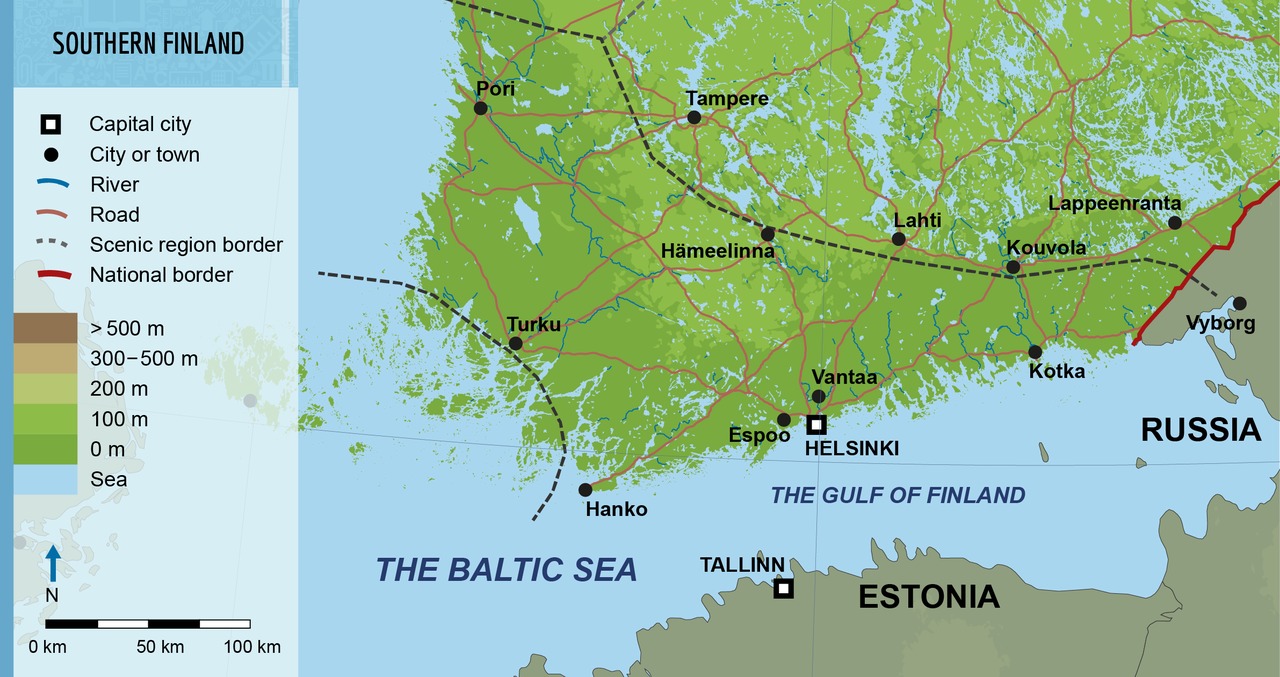
The conditions of Southern Finland are advantageous for agriculture and farming. This is why the region has traditionally been one of Finland's agricultural centers. Nowadays, migration from the countryside to the Greater Helsinki region is high.
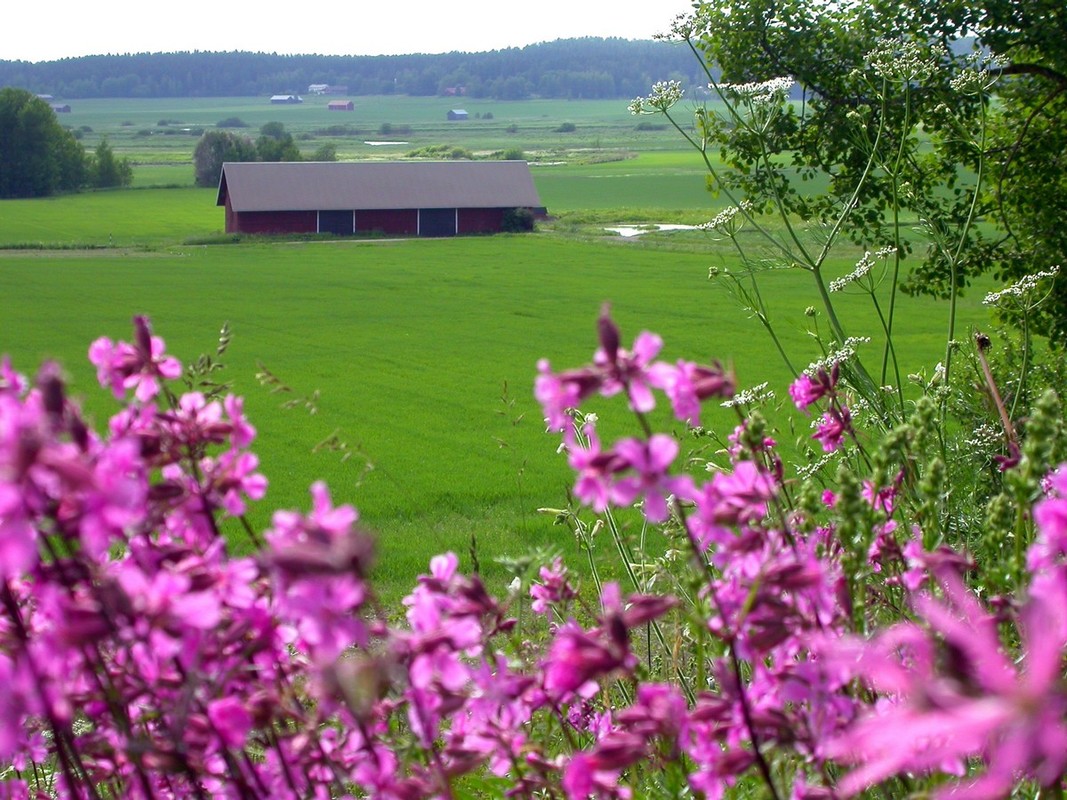
Photographs from Southern Finland
Photographs from the cities of Southern Finland
11.4 Finnish Lakeland
The average depth of the larger lakes is 10 meters, whereas the average depth of smaller lakes is only a few meters. The deepest lake in the Finnish Lakeland is Päijänne. At its lowest point, it is 95 meters deep.
Six of the ten largest Finnish lakes can be found in the Finnish Lakeland: Suur-Saimaa, Päijänne, Iso-Kalla, Keitele, Iso-Längelmävesi and Puulavesi.
Jyväskylä, Kuopio, Mikkeli and Lappeenranta are the largest cities of the Finnish Lakeland.
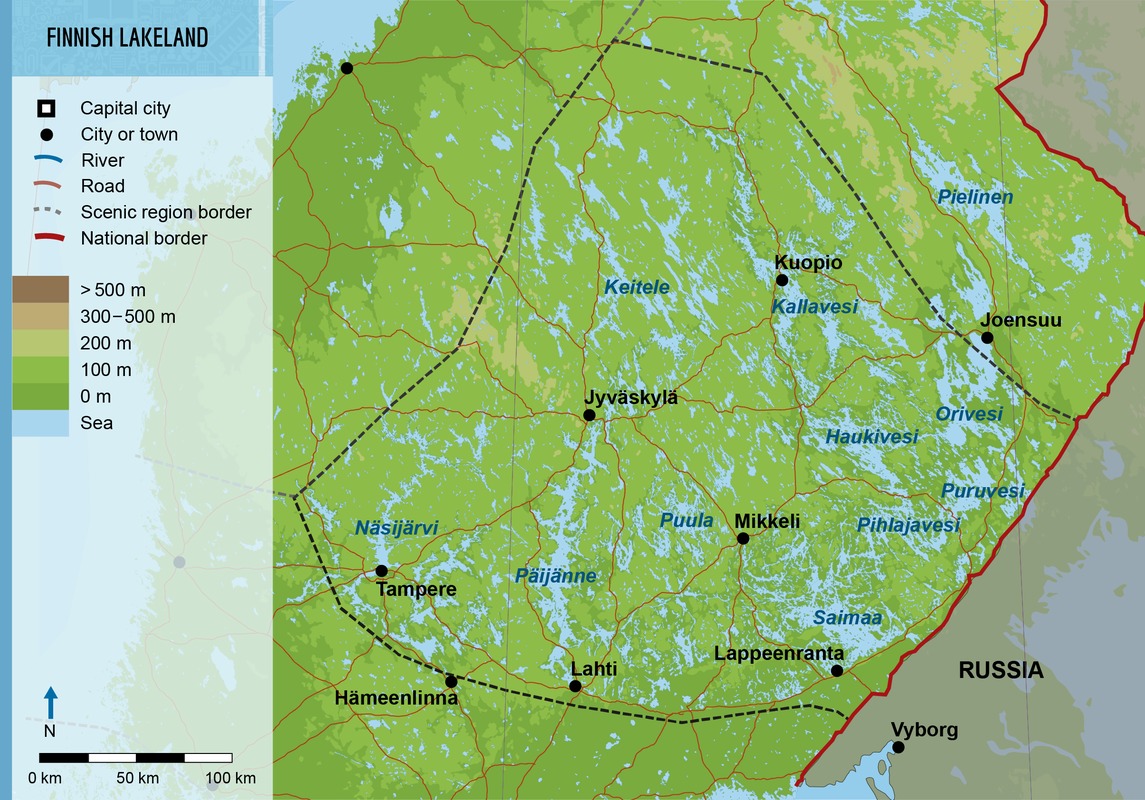
The terrain of the Finnish Lakeland is relatively flat. It is comprised of fields, lakes and forests. The highest points of the Finnish Lakeland are found in the northern parts of the region.
The surface of the water in lakes Päijänne and Saimaa is located 75 metres higher than that of the sea. The waters from the lakes of the Finnish Lakeland flow down to the Baltic Sea through various rivers. The water of most lakes in the Finnish Lakelands is clear. Their shores accommodate thousands of cottages and summerhouses.

Photographs from the Finnish Lakeland
11.5 Ostrobothnia
Oulu is the largest city in Ostrobothnia. It is also the largest city in the northern half of Finland. It is an important central hub for the surrounding regions. Other large Ostrobothnian cities include Vaasa and Seinäjoki.
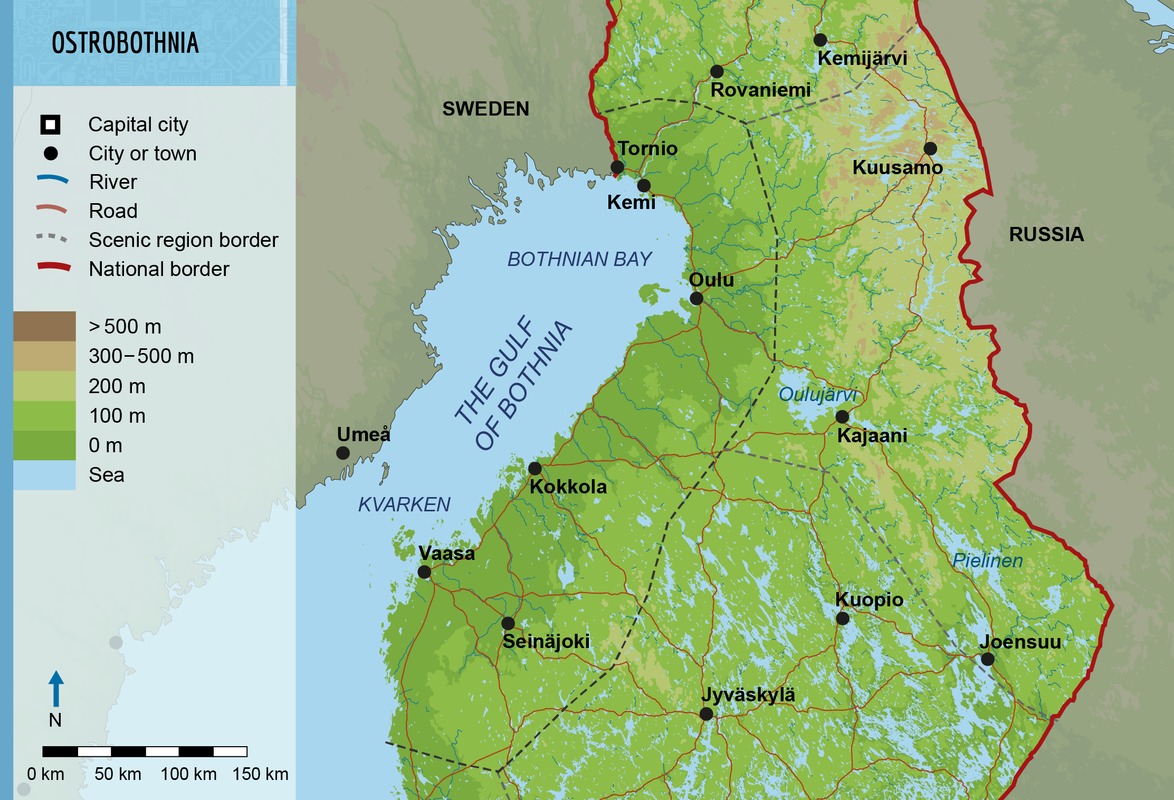
Agriculture and industry are common livelihoods in Ostrobothnia. Human habitation and agricultural areas have developed on the banks of Ostrobothnia's many rivers. The typical Ostrobothnian village is concentrated along a narrow and long main road.
Some central and coastal areas of Ostrobothnia are primarily Swedish-speaking. Areas further inland and to the north are primarily Finnish-speaking.
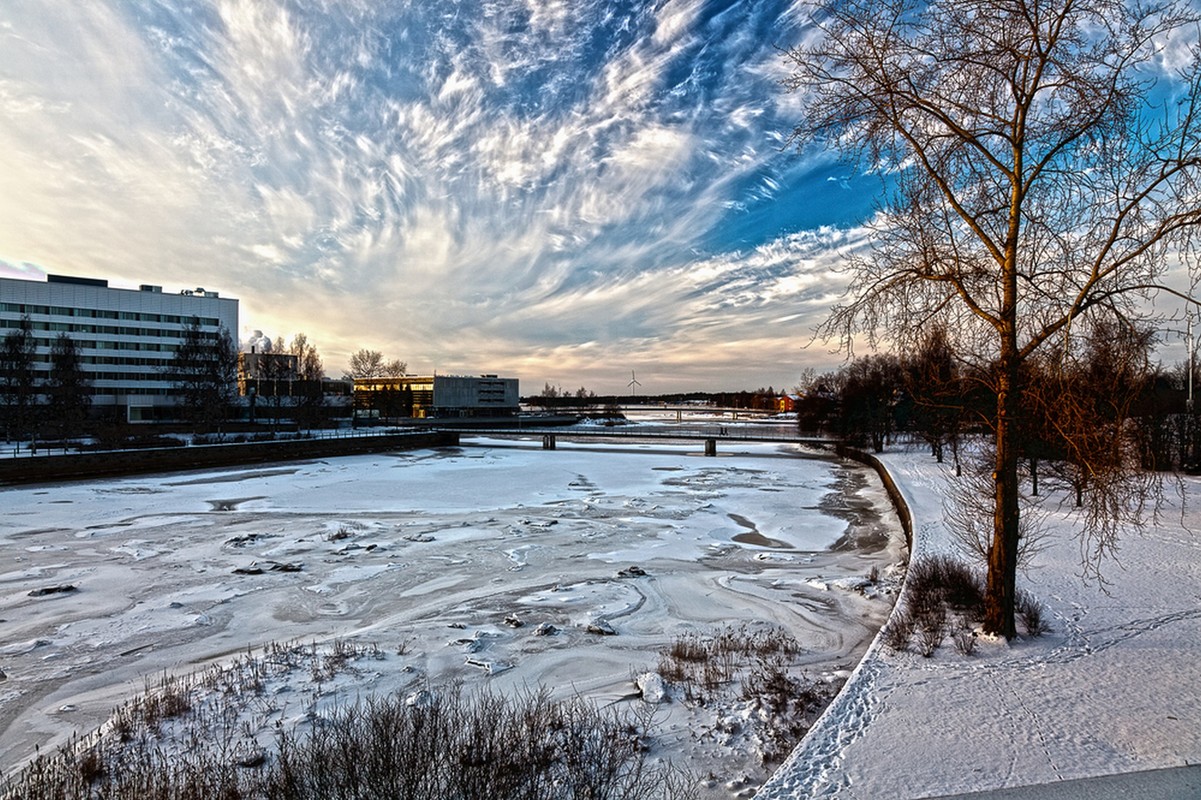
Ostrobothnia is a region of rivers. Oulu.
Photographs from Ostrobothnia
11.6 Eastern Finland
The terrain of Eastern Finland varies greatly. It is characterized by high forested hills. These hills open magnificient views into large areas of forest and bogs. The most famous view of Eastern Finland is from Koli.
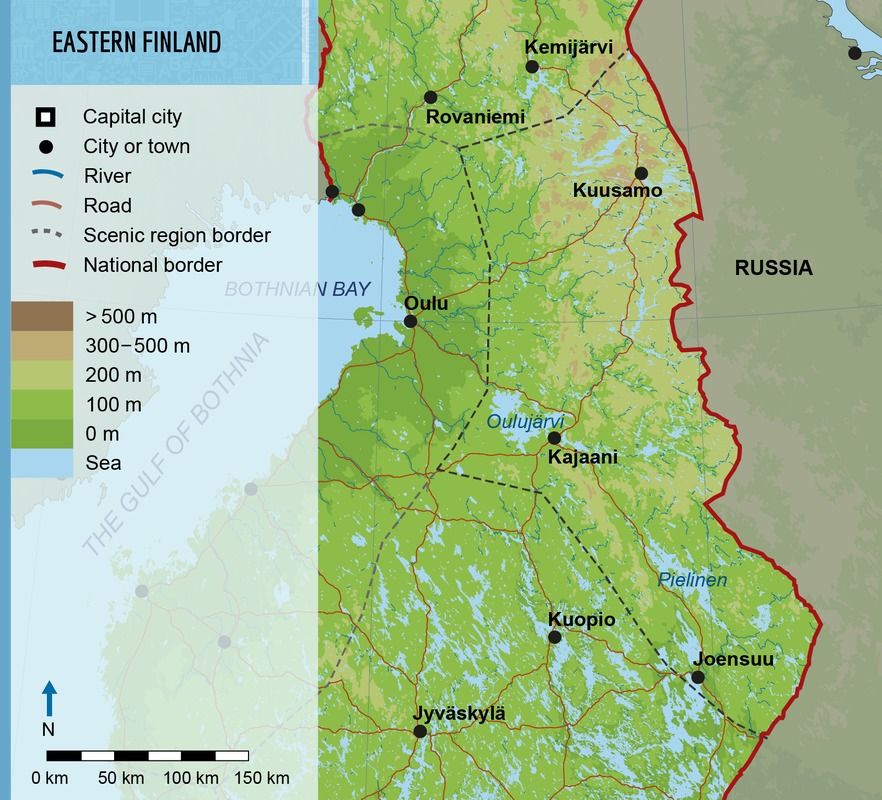
Forestry and agriculture have traditionally been the most important livelihoods in the region. Forestry continues to be significant in Eastern Finland to this day, whereas the importance of agriculture has steadily declined. This has led to many small villages dying out. As a result, the Eastern Finnish population has concentrated more and more to the region's largest cities. The region attracts many holidaymakers and tourists during the summer.
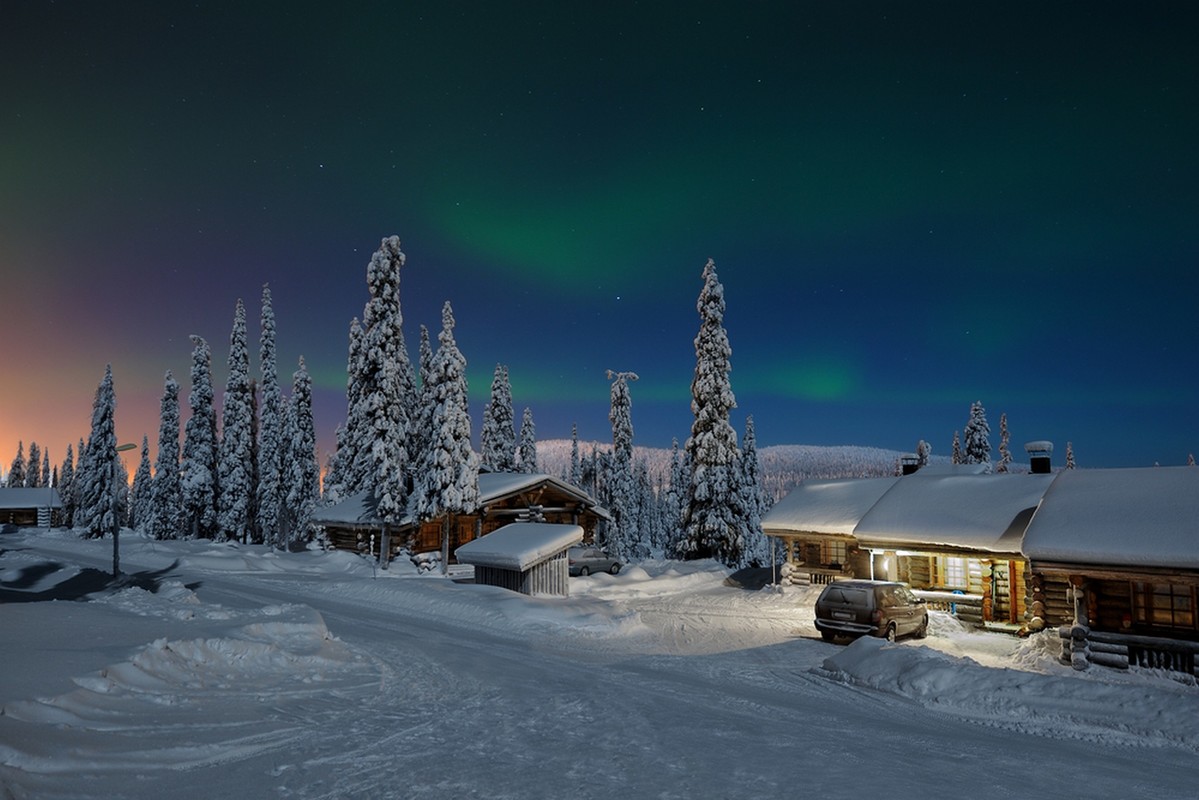
Eastern Finland is beautiful in the winter. Kuusamo.
11.7 Lapland
The scenic area of Lapland can be divided into two smaller parts, Forest Lapland and Fell Lapland. As a whole, Lapland is the largest and the most scarcely populated Finnish scenic region.
Forest Lapland consists of vast taiga forests and bogs. Because of its northern location and short summer, the area is not very suitable for agriculture.

Fell Lapland is characterized by the lack of forests. Spruce does not thrive in the far north, whereas pine is only seen in river valleys. Small birches and shrubs grow on the mountaineous fells.
Rovaniemi is the largest city in Lapland. Lapland is also home to Finland's native Sami people, whose lifestyle is visible in many parts of the region.
Tourism, reindeer herding and animal husbandry are among the most important livelihoods in Lapland. Lapland's popularity among tourists is based on its beautiful landscapes, the midnight sun, the northern lights, and the excellent skiing opportunities.
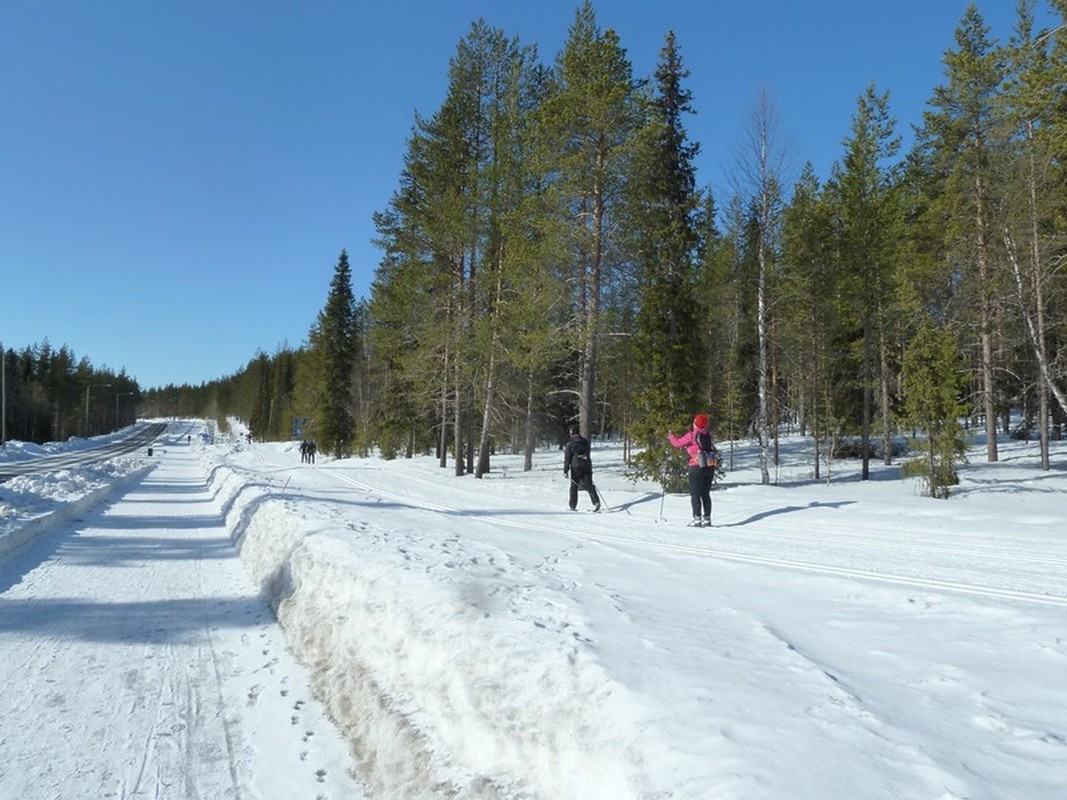
Lapland is one of Finland's most important tourist attractions. Ylläs.
